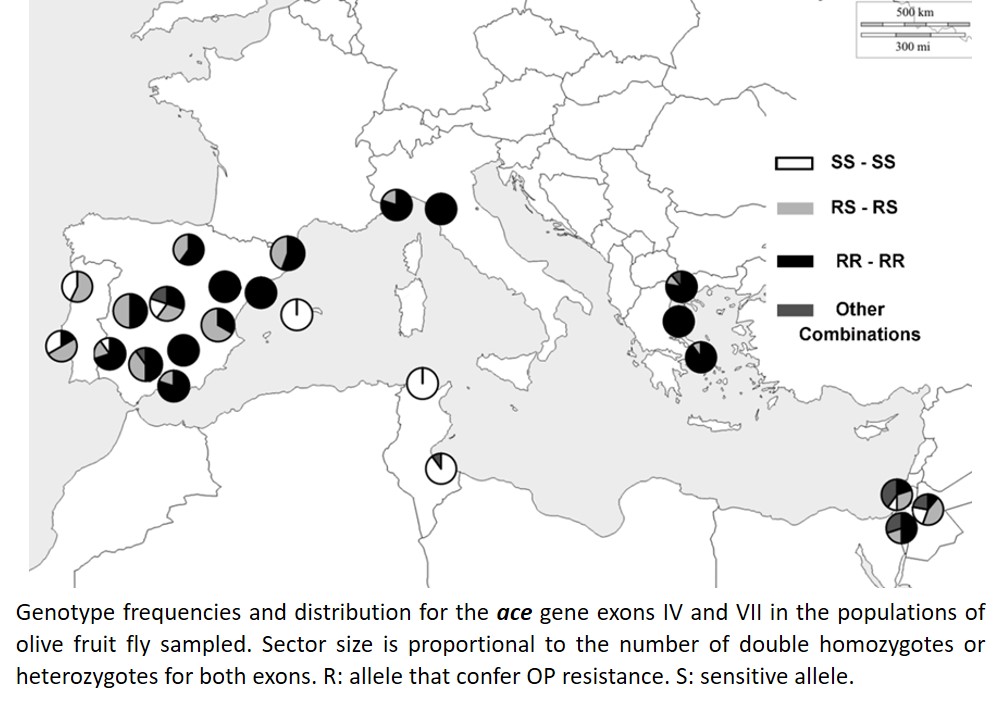Lantero E, Matallanas B, Pascual S, Ochando MD, Callejas C
Phylogeography of Organophosphate Resistant ace Alleles in Spanish Olive Fruit Fly Populations: A Mediterranean Perspective in the Global Change Context
Insects. 2020 Jun 26;11(6):E396
DOI: 10.3390/insects11060396
RESUMEN
The olive fruit fly (olf) Bactrocera oleae is the most damaging olive pest. The intensive use of organophosphates (OPs) to control it, led to an increase in resistance in field populations. This study assesses the presence and distribution of three mutations at the ace gene related to target site insensitivity to OPs in Spain. Samples from other Mediterranean countries were included as external references. Resistance-conferring alleles (from exons IV and VII of the ace gene) reached almost an 80% frequency in olf Spanish populations. In total, 62% of them were homozygous (RR/RR), this being more common in eastern mainland Spain. High frequencies of RR/RR individuals were also found in North Mediterranean samples. Conversely, in Tunisia, only sensitive alleles were detected. The high frequency of genotype RR/RR in Spain indicates high fitness in an agroecosystem treated with pesticides. At exon IV all flies carried the same haplotype for the allele conferring resistance. The sequence analysis at this exon suggests a unique origin and fast expansion of the resistant allele. These results provide evidence that OPs appropriate use is needed and prompt the search for alternative methods for olf pest control.
